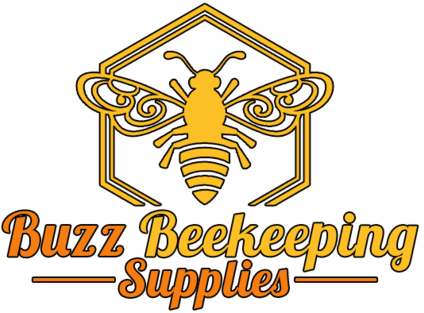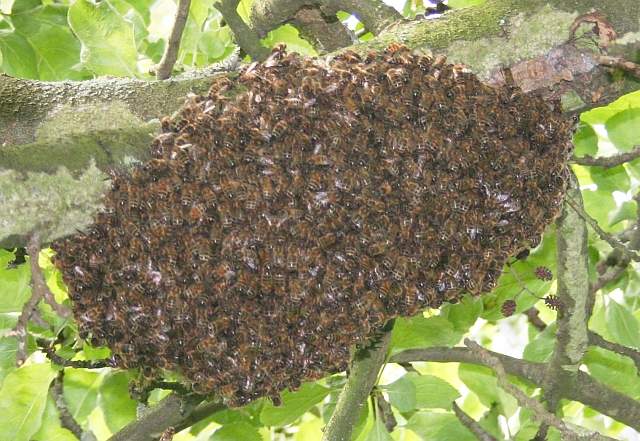Drone Population
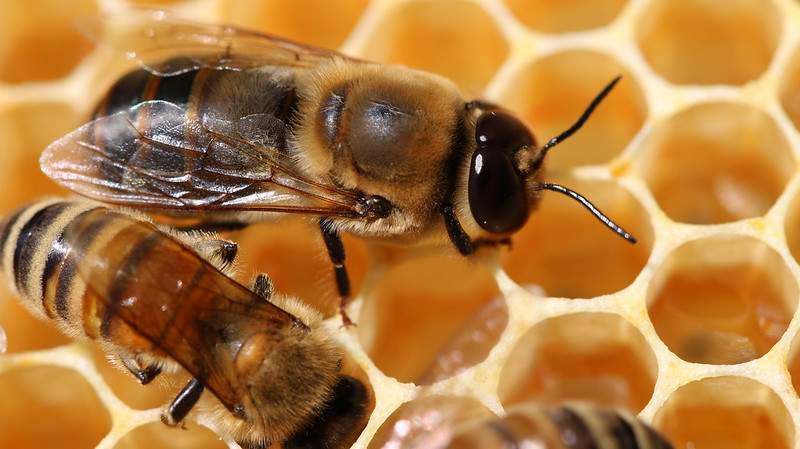
Drone bees are often held in low esteem. Any good beekeeper is aware that drones are a drain on bee colony resources, particularly due to their hearty appetites. As the most unappreciated members of the bee colony, beekeepers tend to limit both the population drones and their consumption of materials to create their comb.
A recent study that focused on the drone population impact on bee colony production resulted in a predictable result. Just as anticipated, the colonies that exhibited larger drone populations yielded smaller amounts of honey. Though the smaller amounts of honey were an expected result of this study, just how much less honey was yielded was a big surprise.
Drone reputation aside, drones are vital members of the bee community. Drones are raised quite early during bee season to facilitate easier mating between supersedure queens and numerous drones of her choosing. They are also useful for availability to mate with the swarm of replacement queens. In preparation for reproductive, swarming season, the colony prioritizes drone cell provisions.
Maintaining healthy colony morale requires about 20 percent of the comb surface to be comprised of drone cells for the majority of active bee season. Comb areas converted from worker bee cells to drone cells sizes are permanent, and lumps of drone cells complicate inspection. Therefore, drone comb patches within a winter cluster aren’t in the colony or the beekeeper’s best interest.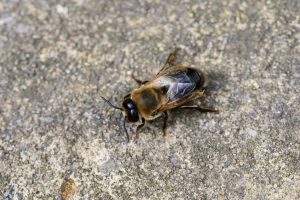
If the colony is without a desirable number of drone cells that are within easy reach in the cluster, bees are forced to improvise by cultivating more drone cells to populate. Beekeepers have a variety of options to remedy these issues. Some of the proceeding tips can be effective solutions to these potential problems.
If extra space is present between the brood chamber top bars and the bottom bars of the next higher box, bees can create an entire row of drone cells across between each frame of the nest. If excess room is available within the cluster, bees may construct drone cell clumps that cross over into the space between frames or extend into the bottom board of access space.
Bee colonies prefer to construct drone cells from old wax rather than converting worker cells to drone cells. This tendency may be forced upon them due to their protection of worker bees that are being reared. This is apparent due to the worker brood cells population with an arch at the frame’s top, upper corner on the outside of the frame that can be rebuilt from worker cells to drone size cells. If this option is unavailable, their recourse is to convert cell size anywhere within the basic brood nest.
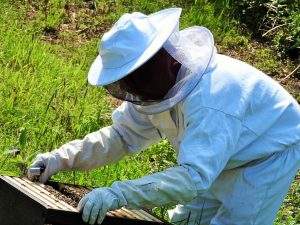 Another popular choice that is sometimes employed offers some evidence of just how dire the need is. If bees find drone cells in the overhead capped honey, they will utilize them. They will even consume or rearrange the honey outside the cluster to ready those cells for eggs. They accomplish this by employing a remote mini-cluster along with an escort to assist the queen to this location to lay. Bees are stationed in this mini-cluster to maintain and keep the drone brood warm.
Another popular choice that is sometimes employed offers some evidence of just how dire the need is. If bees find drone cells in the overhead capped honey, they will utilize them. They will even consume or rearrange the honey outside the cluster to ready those cells for eggs. They accomplish this by employing a remote mini-cluster along with an escort to assist the queen to this location to lay. Bees are stationed in this mini-cluster to maintain and keep the drone brood warm.
A beekeeper can assist the colony by following the bees’ lead. Simply place a drone comb in the brood chamber’s outside slots if necessary. This offers many advantages to both the colony and to the beekeeper. For instance, the outside frame is simple to remove, which facilitates easier Varroa mite inspection. Simply pull out and examine some drone pupa or remove the drone brood to reduce the mite’s population while they are adolescents. Therefore, the outside frame is ideal for your drone brood.
A method that has recently grown in popularity is the practice of cycling drone brood to the freezer. This method is a relatively safe measure for minimizing Varroa mite populations that has earned the approval of organic honey producers. However, to maintain colony morale, it’s not advisable to remove all the members of the drone brood simultaneously. This is just another reason to be sure to distribute the drone comb in both outside frames of the brood
What drones don’t have in intellect, they make up for in brawn. His dedication to work, superior vision, stamina, and wing agility is welcomed in any colony. In fact, he can drop into any colony in his travels away from his home colony. This can endear this big, awkward guy to any beekeeper!
1. Ventilated Suit – https://amzn.to/2D1hJBu
(NEW) Ventilated Jacket – https://amzn.to/2Av6piJ
2. Beekeeper YKK Suit Combo – https://amzn.to/2Xk3xLz
3. Beekeeper Journal – https://bit.ly/3xXxFl2
4. YKK Suit – https://amzn.to/2IDJALO
5. Beekeeper Jacket – https://amzn.to/2FirwTW
6. Beekeeping Gloves:
– Goatskin Beekeeping Gloves – https://amzn.to/2GYxBZW
– Cow Leather Beekeeping Gloves – https://amzn.to/2uiSExd
7. Queen Marking Kit – https://amzn.to/2Wm1kCw
– Queen Marking Pens – https://amzn.to/3c4vE8y
–Queen Marking Cage – https://amzn.to/2TDwwdQ
🐝 Good Luck and Happy Beekeeping!
